Springfield Armory 1911 .45 ACP Mil-Spec Parkerized Handgun – PB9108LP For Sale
$581.99
The Springfield Armory 1911 .45 ACP Mil-Spec Parkerized Handgun – PB9108LP seamlessly marries classic design with modern enhancements, honoring the legacy of the iconic 1911 with its full-size stainless steel frame and slide. The handgun sports a polished flat surface finish juxtaposed with a bead-blasted matte finish on rounded areas, exuding both aesthetic appeal and functionality. It is fitted with a 5-inch match-grade barrel for superior accuracy, alongside a meticulously crafted slide with slanted serrations for smooth operation. Traditional elements, such as the original arched mainspring housing, spur hammer, standard grip safety, and short military combat trigger, are preserved, incorporating modern touches like the Springfield Armory® I.L.S.™ for enhanced safety. The fixed combat 3-Dot sights and lowered, flared ejection port ensure reliable targeting and cartridge ejection. Adorned with elegant cross-cannon emblazoned walnut grips secured with slotted screws, this handgun is a reliable classic choice for modern shooters, upholding the heritage of the 1911 with style and precision.
Why do 1911s jam so much?
The 1911 pistol can experience jamming due to several factors:
1. **Ammunition Issues**: Some 1911s are sensitive to ammunition type, and using inconsistent or low-quality ammo can lead to feeding and ejection problems.
2. **Magazine Problems**: Poor-quality or worn-out magazines can cause feeding issues, a common source of jamming in any semi-automatic handgun.
3. **Tight Tolerances**: Many 1911s are built with tight tolerances for increased accuracy, making them more prone to issues when dirty or improperly lubricated.
4. **Improper Maintenance**: Failing to clean and lubricate the pistol regularly can result in increased friction and mechanical failures.
5. **Extractors**: A faulty or improperly tensioned extractor can cause issues with ejecting spent cartridges.
6. **User Handling**: Limp-wristing, or not holding the pistol firmly enough, can interfere with the slide’s operation, causing failures to feed, fire, or eject.
7. **Aftermarket Parts**: Modifying a 1911 with aftermarket parts that are not properly fitted can lead to reliability issues.
While the 1911 design has a reputation for occasional jamming, many of these issues can be mitigated with proper care, high-quality parts, and selecting compatible ammunition.
What 1911 did Chris Kyle use?
Chris Kyle used a Springfield Armory TRP (Tactical Response Pistol) as his 1911 handgun.
Is a 1911 better than a Glock?
The question of whether a 1911 is better than a Glock largely depends on personal preference and the specific needs of the user. Here are some factors to consider:
1. **History and Design**:
– The 1911 is a classic firearm designed by John Browning over a century ago, renowned for its historical significance and iconic design. It’s often favored by enthusiasts who appreciate its craftsmanship and single-action trigger.
– Glock, introduced in the early 1980s, is known for its modern polymer construction, reliability, and simplicity. It’s favored for its ease of use and maintenance.
2. **Use Case**:
– The 1911, typically chambered in .45 ACP, is often chosen for its ergonomics, accuracy, and the tactile feel of its trigger. It’s a popular choice for target shooting and some competitive shooting disciplines.
– Glocks come in a variety of sizes and calibers, offering versatility for different purposes such as concealed carry, law enforcement, and home defense. They’re praised for their durability and high capacity magazines.
3. **Maintenance and Reliability**:
– Glocks are generally known for their ease of maintenance and reliability under harsh conditions, often requiring less frequent cleaning.
– The 1911 can be more sensitive to maintenance, with tighter tolerances that might require more regular cleaning and tuning.
4. **Ergonomics and User Comfort**:
– The choice can also come down to how the firearm feels in your hand. Glocks typically have a more block-like grip, while the 1911 has a slimmer, more contoured grip.
Ultimately, “better” is subjective and often based on personal preference, intended use, and specific features important to the user. Both firearms have distinct qualities that make them suitable for different people and purposes.
What is the weakness of the 1911?
The 1911 pistol, while renowned for its historical significance and reliability, does have a few weaknesses:
1. **Limited Magazine Capacity:** Most standard 1911s have a magazine capacity of 7 to 8 rounds, which is relatively low compared to modern semi-automatic pistols that can hold considerably more ammunition.
2. **Weight and Size:** The 1911 is generally heavier and larger than many modern pistols, which can make it less comfortable to carry for extended periods or for concealed carry purposes.
3. **Maintenance Requirements:** The 1911 design involves more parts and requires more meticulous maintenance and lubrication compared to some contemporary designs, which can affect reliability if not properly maintained.
4. **Sensitivity to Ammunition:** Some 1911 models can be picky with certain types of ammunition, especially if not properly tuned or if using non-standard calibers.
5. **Complex Disassembly:** The process of disassembling and reassembling a 1911 can be more complex than newer, more user-friendly pistol designs, making field stripping and general cleaning more challenging for some users.
While these are potential weaknesses, many enthusiasts and professionals still prefer the 1911 for its ergonomic grip, trigger, and historical appeal.
What pistol is known for jamming?
The early models of the Colt M1911 and some versions of the Beretta M9 have been reported to experience jamming issues. These issues often depend on specific circumstances, such as maintenance practices, environmental conditions, and ammunition quality.
What is the most common problem with the 1911?
The most common problem with the 1911 pistol is typically related to feeding and reliability issues. These can include failures to feed, extract, or eject, often due to issues with the magazine, extractor tension, or improperly tuned components. Additionally, the 1911 may experience issues with the slide failing to lock back due to worn or incompatible parts. Regular maintenance and using quality components can help mitigate these problems.
What 1911 does the FBI use?
The FBI has used various firearms over the years, but the 1911 style pistol that they’ve been known to use is the Springfield Armory 1911. It’s notably used by the FBI’s Hostage Rescue Team (HRT) and SWAT teams. This pistol is designed for reliability and accuracy in tactical situations.
What caliber did Chris Kyle make his longest shot with?
Chris Kyle made his longest confirmed sniper shot with a .338 Lapua Magnum rifle.
Did Chris Kyle shoot a sniper?
Yes, Chris Kyle, a former Navy SEAL and renowned sniper, reported in his autobiography “American Sniper” that he shot and killed enemy snipers during his service in Iraq.
Are 1911s high maintenance?
1911 pistols are often considered to be higher maintenance compared to some modern firearms. This is due to their design, which dates back over a century and incorporates more intricate parts. The 1911 requires regular cleaning and lubrication to ensure reliable functioning, especially if used frequently or in harsh conditions. Additionally, they may require more attention to tuning and fitting parts, particularly in custom models or when used for competitive shooting. Proper maintenance and care will help ensure the longevity and reliability of a 1911 pistol.
Is a striker fired better than a 1911?
Whether a striker-fired pistol is better than a 1911 largely depends on personal preference and intended use. Here are some points to consider for each type:
**Striker-Fired Pistols:**
– **Pros:**
– Generally simpler design with fewer parts.
– Consistent trigger pull from shot to shot.
– Often features a lighter, polymer frame, contributing to lower weight.
– Widely used in modern handgun designs, providing a large variety of options.
– Typically requires less maintenance and is easier to disassemble.
– **Cons:**
– Some users feel the trigger pull is less crisp compared to a 1911.
– Usually lacks an external safety, relying on passive safety mechanisms.
**1911 Pistols:**
– **Pros:**
– Known for a crisp, smooth trigger pull.
– Considered very accurate and reliable by enthusiasts.
– Classic design with a strong historical legacy.
– Customization options are plentiful.
– **Cons:**
– Generally heavier due to a steel frame.
– More complex design can require more maintenance.
– Typically has a single-action trigger, requiring manual safety operation.
Ultimately, whether a striker-fired pistol or a 1911 is “better” will depend on your specific needs, experience, and comfort with each type. It’s always a good idea to try out different models to see which feels best for you.
What pistol do Navy SEALs prefer?
Navy SEALs typically prefer the SIG Sauer P226 pistol. This 9mm handgun is known for its reliability, accuracy, and durability, making it a popular choice among SEAL teams for many years.
What not to do with a 1911?
When handling a 1911 pistol, here are some things you should avoid doing:
1. **Avoid Neglecting Safety**: Do not bypass safety protocols. Always engage the thumb safety when not firing and ensure the weapon is unloaded before handling.
2. **Don’t Overlook Maintenance**: Avoid skipping regular cleaning and maintenance. The 1911 requires proper lubrication and cleaning to function reliably.
3. **Avoid Improper Disassembly**: Don’t disassemble the firearm without proper knowledge or guidance. The 1911 has a specific takedown process that, if done incorrectly, can lead to damage.
4. **Do Not Use the Wrong Ammunition**: Avoid using ammunition that is not specifically designed for a 1911. Using incorrect ammo can lead to malfunctions or damage.
5. **Avoid Dropping the Slide on an Empty Chamber**: Repeatedly releasing the slide on an empty chamber can cause undue wear on the gun.
6. **Don’t Ignore the Grip Safety**: Make sure you always engage the grip safety as intended.
7. **Avoid Rapid Fire Beyond Control**: Firing rapidly without control can decrease accuracy and increase wear.
8. **Do Not Assume Safety Reliance**: Relying solely on mechanical safeties without proper handling caution can be dangerous.
9. **Avoid Dry Firing**: While dry firing some firearms is safe, excessive dry firing of a 1911 without snap caps can potentially damage the firing pin.
10. **Don’t Customize without Expertise**: Avoid making modifications without expertise or proper guidance, as improper changes can affect the weapon’s reliability and safety.
Always adhere to proper firearm handling and safety guidelines when using a 1911 or any firearm.
What is the most accurate 1911?
The most accurate 1911 models are often regarded as those from high-end manufacturers known for precision and craftsmanship. Brands such as Wilson Combat, Nighthawk Custom, and Ed Brown are frequently cited for producing some of the most accurate 1911s due to their meticulous attention to detail, fitting, and quality control. Specific models like the Wilson Combat Supergrade, Nighthawk Custom GRP, and Ed Brown Executive Elite are particularly noted for their accuracy. Ultimately, the choice of the “most accurate” model can depend on personal preference and testing.
Why did the US stop using the 1911?
The US military began replacing the M1911 pistol with the Beretta M9 in 1985. The decision to transition away from the M1911 stemmed from several factors:
1. **Standardization**: The US aimed to align more with NATO standards, and adopting a 9mm pistol (like allied forces) facilitated interoperability in terms of ammunition and logistics.
2. **Capacity**: The M9 provided a higher magazine capacity (15 rounds compared to the M1911’s 7 rounds), which was deemed advantageous for military operations.
3. **Modernization**: Over the years, advancements in firearm technology necessitated upgrades. The M9 offered features such as a double-action/single-action trigger system and ambidextrous safety, which were valued improvements over the older design of the M1911.
4. **Aging Equipment**: By the 1980s, many of the U.S. military’s M1911s were decades old and showing signs of wear, increasing maintenance needs and costs.
While the transition to the M9 was met with some criticism and nostalgia from M1911 enthusiasts, these operational advantages prompted the switch.
| Sights | 3 Dot |
|---|
Be the first to review “Springfield Armory 1911 .45 ACP Mil-Spec Parkerized Handgun – PB9108LP” Cancel reply
Related products
Springfield Armory 1911
Springfield Armory 1911 45ACP 4" LightWeight Champion Operator PX9115LP
Springfield Armory 1911
Springfield Armory 1911 5" .45ACP Stainless Steel Full Size PB9151LP
Springfield Armory 1911
Springfield Armory 1911 45ACP 4" LightWeight Champion Operator PX9115LP
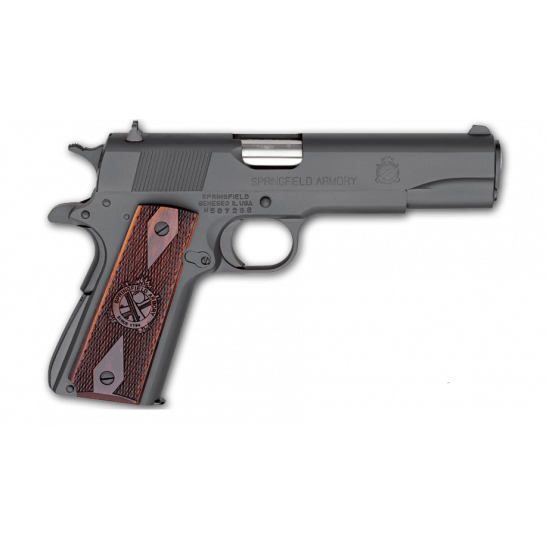
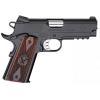
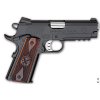
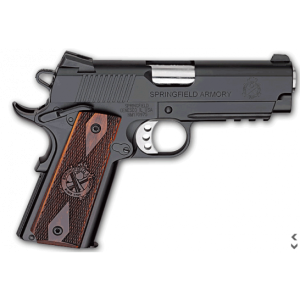
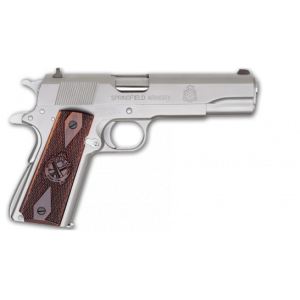
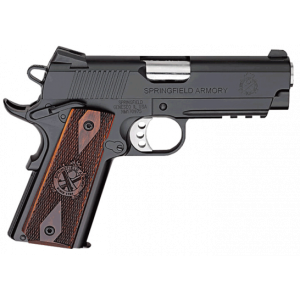
Reviews
There are no reviews yet.